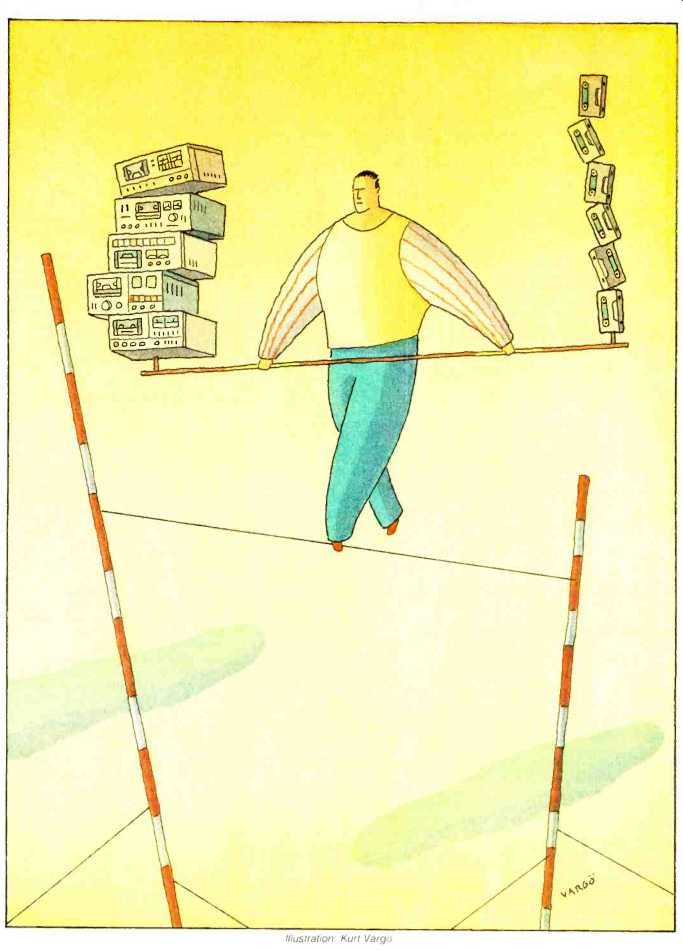
by HOWARD A. ROBERSON
Most recordists stick to standard equalization settings to match the tape type being used: 120 µS for Type I (normal) tapes, and 70 µS for Type II (CrO2) and Type IV (metal) tapes. In fact, the majority of tape decks set EQ automatically, decoding the holes in the edge of the cassette. Some decks do, however, permit the user to switch-select the EQ, sometimes independently from the bias level. There are possible advantages in being able to do this: Using 120-µS EQ for higher high-frequency MOLs (but higher noise) or using 70-µS EQ for lower noise (but lower high-frequency MOLs). This relationship is based, of course, upon using the same EQ setting for both recording and playback.
You can't necessarily assume that tapes made with noise reduction will always be played back with that same NR mode. Actually, it's rather common for a tape made with NR, especially Dolby B NR, to be played back on another recorder, such as an inexpensive portable, that does not have Dolby B NR. The sound usually will be a bit too bright, but that's not bad, particularly when compared to what happens when tapes encoded with Dolby C or dbx NR are played back without decoding. And if the NR systems are different, what then? And with an EQ change?
120-uS. 70-µS Equalization
Using the same equalization for recording and playback will yield a flat frequency response, provided the deck is well matched to the tape. This is true for either 120- or 70-µS EQ, as can be seen in Fig. 1. When 70-µS playback equalization is used with a tape made for 120-µS playback EQ, however, there is a large droop in the response above 1 kHz (top trace). From the same relationship, there is a large boost (middle trace) when 120-µS playback EQ is used with a tape needing 70-µS EQ. The addition of Dolby C NR in the first case (bottom trace) causes a doubling of the droop, and the great loss in high-frequency content is very audible.
The conclusion at this point is that the playback EQ might be changed on purpose to bring down excessive brightness (120 to 70) or to bring up a dull high end (70 to 120), but if Dolby NR is involved, the effect will be much more exaggerated. The change with Dolby B NR would be less than what is shown in the figure, but the recordist should be aware of the possible effects. The boosts or droops from playback EQ changes would not be increased by using dbx NR, however.
Dolby B vs. Dolby C NR
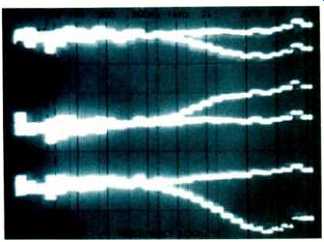
Fig. 1--Wrong equalization in playback. Top traces were recorded with 120-uS
EQ and played back with 120 -and 70-µS EQ. Middle traces were recorded with
70-uS EQ and played back with 70- and 120-uS EQ. Bottom traces are same as
top set but recorded and played back using Dolby C NR. (Vertical scale: 5
dB/div.)
As stated earlier, tapes encoded with Dolby B NR may seem overly bright if not decoded, but will still be acceptable for noncritical playback.
Similar statements have been made concerning the playback of Dolby C NR tapes with the use of Dolby B NR decoding. Figure 2 illustrates that there is not a large difference in the playback response when using Dolby B NR decoding on a tape made with Dolby C NR. At meter-zero level (top trace), the response with Dolby C NR decoding is very flat, but response with Dolby B NR decoding falls slowly above 2 kHz, with a rapid roll-off above 10 kHz. This occurs simply because the Dolby B NR decoder does not compensate for the Dolby C NR anti-saturation and spectral-skewing encoding. At -15 dB (middle trace), there is very close correspondence in the responses over the great majority of the entire band. At -30 dB (bottom trace), there is some elevation in the response above 500 Hz with Dolby B NR decoding. This is to be expected, because Dolby B NR does not have as much encoding boost or decoding cut as Dolby C NR at this low level.
Figure 3 presents the other side of this comparison: Dolby C NR decoding on a tape encoded with Dolby B NR. The reverse of the results in Fig. 2 is shown: A high-frequency boost, especially at meter zero (top trace), and a reduction in level above 500 Hz at 30 dB (bottom trace), except for the peak at 20 kHz.
Figures 2 and 3 demonstrate that, over a range of important levels, relatively small response differences result when using Dolby B NR decoding on tapes made with Dolby C NR, or vice versa. The high-frequency boost with Dolby C NR decoding at meter zero (Fig. 3) was a bit much, however. All this demonstrates that Dolby B NR should be selected for playback of Dolby B NR encoded tapes, as is possible with any cassette deck that has Dolby C NR.
Dolby C vs. dbx NR
Every so often, someone makes a statement or asks a question indicating a belief that the dbx and Dolby NR systems are pretty much alike and that encoding and decoding differences are minor. Figure 4 should help resolve this misunderstanding. Recordings were made at five meter levels, in 10-dB steps from +10 (top trace) to -30 (bottom trace). Dolby C NR was used for the recording, but dbx NR was used in playback. Two basic effects resulted from this combination: Severe response deviations across the band, and nonlinear changes in level at all frequencies.
Three factors contribute to the results shown in Fig. 4. First, dbx decoding includes expansion even at the highest signal levels, but Dolby C NR decoding does not expand when the signal amplitude rises above Dolby level. Second, dbx decoders have high-frequency cut even at very high levels, but Dolby C NR decoders actually boost high frequencies. Finally, the dbx decoder's response is the same at all levels, but the Dolby C decoder applies a broad high-frequency cut that deepens and extends lower in frequency as the level is reduced. Notice how the 10-dB steps in the overall record level are rendered into changes of 4 to 16 dB in playback, depending on the frequency and overall level. The negative results are very obvious and most unsatisfactory with any sort of music.
Next, I recorded with dbx NR and then used Dolby C NR in playback.
Record levels ranged from + 10 (top trace) to -40 dB (bottom trace), with the zero-meter level set without NR switched in. Figure 5 illustrates the very poor responses from this combination. Because Dolby C NR does not have expansion or high-frequency cut at higher levels, the 10-dB steps have been reduced to 5 dB or even less, and the high end is elevated 10 dB or more. Only at -40 dB (relative record level) does the response become roughly flat. This is another hopeless case of bad sonics that emphasizes the lack of compatibility between dbx and Dolby C NR.
Dolby C with dbx NR
Some time ago, Technical Editor Ivan Berger ("Spectrum," August 1985) commented on using both Dolby and dbx noise-reduction systems. The aim is to get a large reduction in noise with less susceptibility to low-level noise pumping. The combination is set up using the deck's built-in Dolby NR system and an external dbx processor.
I tried the combination, using a Nakamichi CR-7A deck with Dolby C NR and an external dbx 224 processor.
Figure 6 shows the record/playback responses from + 10 (top trace) to 30 dB (bottom trace), relative to meter zero. (The -20 and -30 responses were purposely shifted up to put them in the same figure.) Except for a little roll-off at the high end, the responses are very flat for most levels.
To show how little response is affected by adding dbx to Dolby C NR, the traces for the combined NR systems are overlaid on traces made with Dolby C NR alone.
Figure 7 shows what happened with further reductions in level, from -30 to 60 dB, all with Dolby C NR alone and also with dbx NR added. The results remained really quite good, although the Dolby C NR response at -60 dB has a rise in noise at both the low and high ends.
I was pleasantly surprised by how good the responses remained over the 70-dB range shown in Figs. 6 and 7.
They emphatically confirm that the two NR systems will not adversely affect flat recorder response, such as that provided by the Nakamichi CR-7A used in these tests. Adding a bit of equalization after the NR decoders-a boost that increased from 1 dB at 12 KHz to 2 or 3 dB at 20 kHz-would make all the responses fit within ±2 dB from 30 Hz to 20 kHz. To keep the equalizer filter from adding unwanted noise, I prefer to keep the slight roll-off.
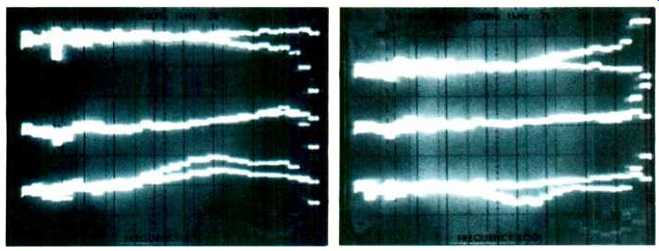
Fig. 2--Recorded with Dolby C NR and played back with Dolby B and C NR.
Top pair at zero meter level, middle at -15 dB, and bottom at 30 dB. See
text. (Vertical scale: 5 dB/div.)
Fig. 3--Same as Fig. 2 but with Dolby B NR during recording. Note the bottom trace's midrange deviation at -30 dB; see text.
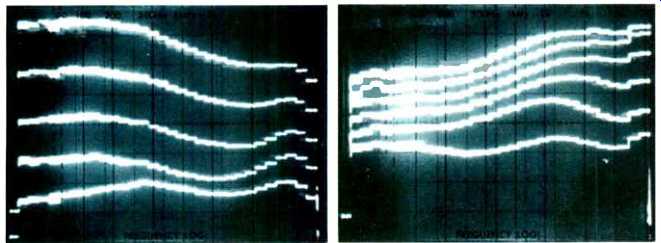
Fig. 4--Effects of recording with Dolby C NR and playing back using dbx
NR. Recording levels, from top: +10, 0,- 10, -20, and -30 dB. See text. (Vertical
scale: 10 dB/div.)
Fig. 5--Reverse procedure of Fig. 4, here using dbx NR during recording and Dolby C NR during playback. See text. (All other test conditions same as Fig. 4.)
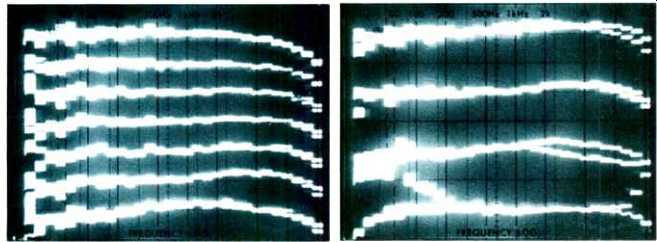
Fig. 6--Effects of using Dolby C NR alone and Dolby C NR in conjunction
with dbx NR, in both recording and playback; see text. Traces made using
both NR systems are overlaid on traces made with Dolby C NR alone; note the
close match at most levels. Recording levels, from top: +10, +5, 0, -5, -10,
-20, and -30 dB. (Vertical scale: 5 dB/div., with traces at -20 and -30 dB
shifted up for clarity.)
Fig. 7--Same as Fig. 6 but for recording levels of (from top) -30, -40, -50, and -60 dB.
Summary
Equalization changes are valid options, when the deck permits, for getting better record/playback high-frequency MOLs (120 µS) or lower noise (70 µS). If the equalization is changed just for playback, a noticeable change will occur in the level of the higher frequencies, which may or may not be desirable. If Dolby NR is used, the change in playback EQ causes exaggerated effects, usually unwanted.
Changes from Dolby B NR encoding to no NR or Dolby C NR in playback will be noticeable, but perhaps acceptable in noncritical listening. Changes from Dolby C NR to Dolby B NR in playback may be similarly acceptable.
Adding or taking out Dolby C NR decoding when listening will cause gross and unacceptable sonic effects.
The effects would be most unwanted with dbx NR as well, if the playback does not have the needed decoding or if decoding is added when the recording had no encoding. Using Dolby NR decoding with dbx encoding, or dbx decoding with Dolby NR encoding, produces severe response and level distortions of the original signal, and the combinations have no place in normal listening.
It is possible to use both dbx and Dolby C NR together, by using an external dbx encoder/decoder and a deck with Dolby C NR built in; this will have minimal effects on response and level linearities. It is up to the individual user to decide whether the complexity and cost is worth the possible reduction of low-level noise pumping.
As a generality, I can state that EQ and NR modes should not be switched between recording and playback. This discussion, however, may help the careful user understand the relationships better and choose certain combinations to gain the most satisfactory overall results.
(adapted from Audio magazine, Aug. 1988)
Also see:
The Whys and Hows of Cassette Equalization (Jun. 1985)
Archival Revival -- Problems and Solutions in Long-Term Tape Performance (Nov. 1990)
Deck to Deck Matching and NR: Straightening the Mirror (Aug. 1986)
Hi-Fi Sound on Hi-Fi VCRs (Sept 1988)
Crest Factors of CDs (Dec. 1988)
= = = =